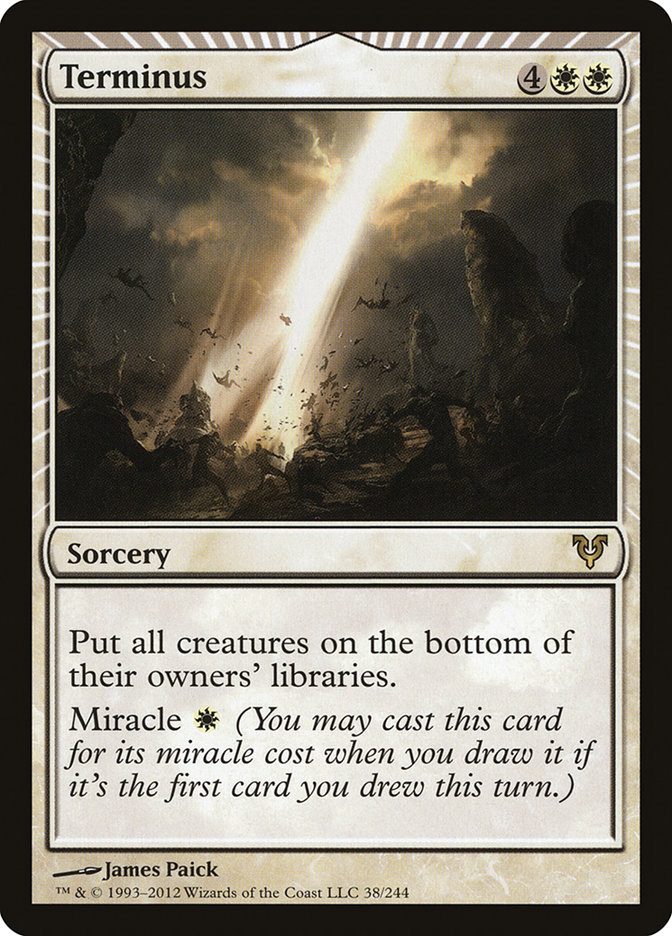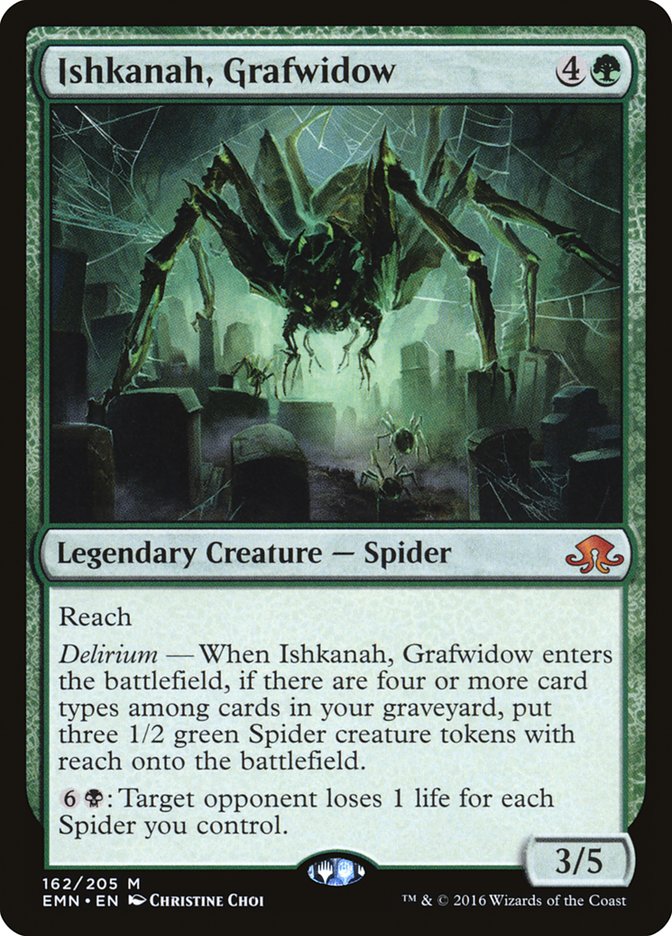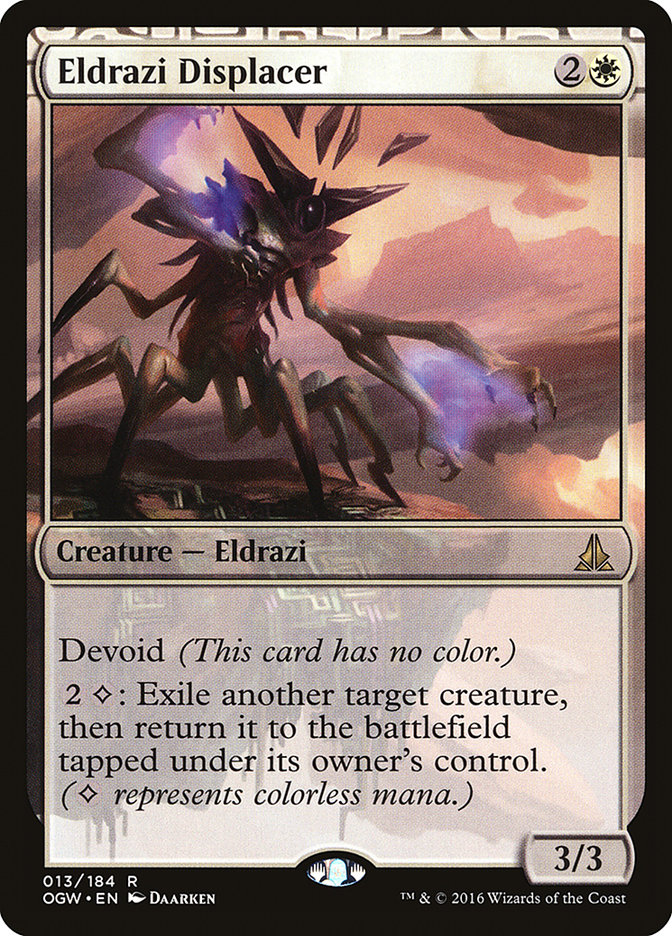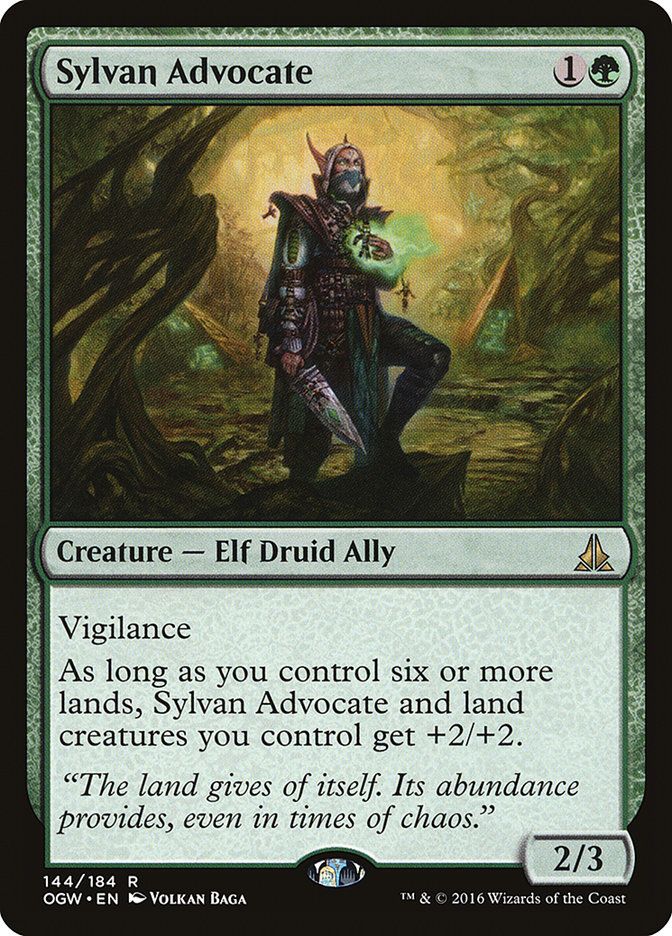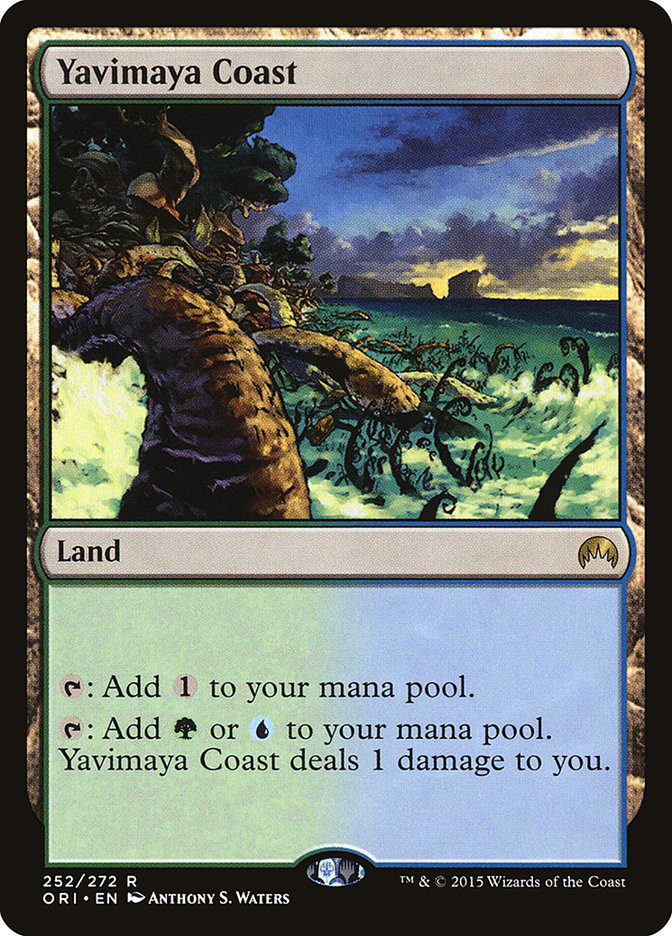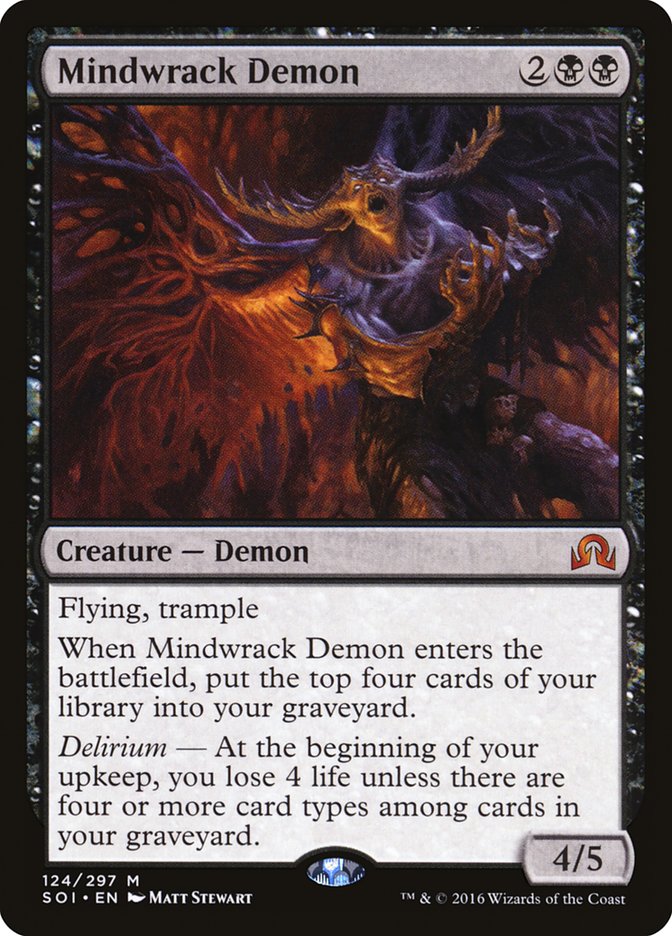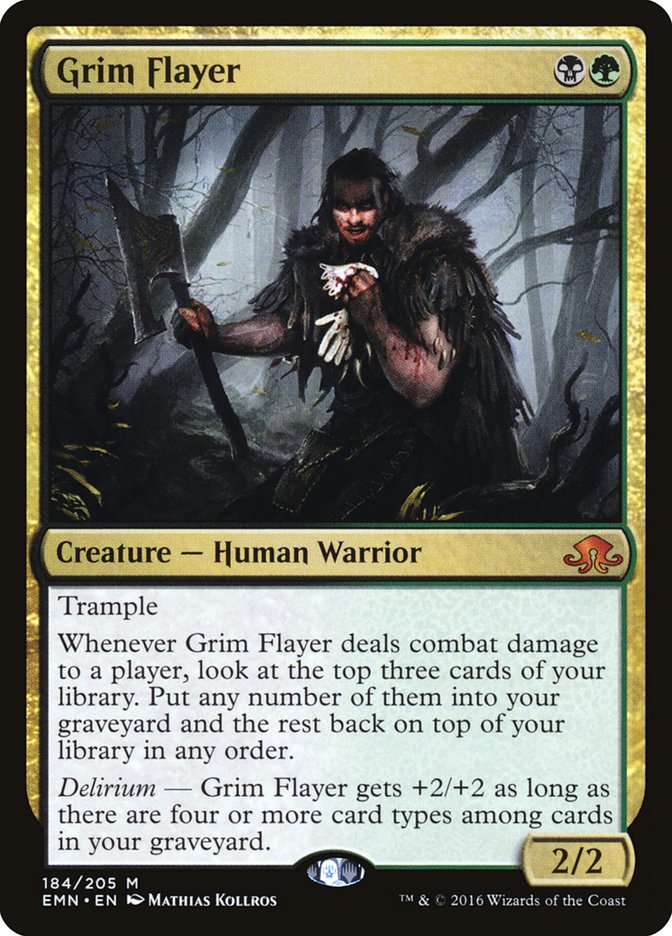Manifested delusions cloud my judgment. Is this real or have I constructed it? These feelings won’t go away. Just go away! Why must they question me? I know the truth, but affirmation eludes me. They can’t see without vision. I must show them. Not with sight. No, their eyes deceive them. Lost are their minds. Singed wings heal while broken dreams fester. Defeat is what drives them now. The motivated must cleanse the apathetic. We must wake from this sleepless nightmare. Destroy that which influences us. She’s real.
She’s real.
She’s real.
The single greatest aspect of Magic: The Gathering is Wizards of the Coast’s ability to constantly reinvent the wheel without it feeling as such. Every set brings new and interesting keywords, but the seeds of these designs are reaped from past mechanics. We may very well have a strong understanding of the game, but its roots are flush with knowledge long forgotten.
Once in a while a new mechanic is introduced that is conceptually powerful, but in reality goes against fundamentals previously internalized. On Innistrad this mechanic is delirium. Four card types in the graveyard unleash a spell’s true potential. What was once Lay of the Land is now the end of days. Terminus brought forth by the heavens above. New and improved Giant Spider with itty-bitty projectile baby spiders!
Delirium opens the door to discussing some of the more subtle topics like opportunity cost, reverse-engineered deckbuilding, organic interaction, and many others.
The opportunity cost of a decision in Magic is the value of the opportunities that you miss out on in making that decision. This pretty much means that any outcome decided upon comes at the cost of an alternative scenario. Choices. Each one comes with an opportunity cost. The decision becomes if going down one path is worth the cost of not going down the other. The most topical example for one is sacrificing turns or deck slots to enable delirium.
New sets always get players to gravitate towards thinking about cards in their best possible scenarios. “Wouldn’t it be cool”, everyone says as they think about all the disgusting things they would do to players with Emrakul, the Promised End. It’s easy to imagine situations that cards are good in, but quite difficult to understand all the scenarios where they won’t be. This lends itself to why we see players gravitate towards more proactive strategies in the initial weeks of a new format. It’s difficult to see the whole picture right away, which tunnel visions many into putting more emphasis on the way one’s deck operates independently rather than how it interacts organically. Delirium is this philosophy in physical form.
On the surface delirium looks like a homage to one of the most initially underrated cards in the history of the game: Tarmogoyf.
Initially misunderstood as a card that needed extensive setup, Tarmogoyf proved us all wrong by showing that its value grew with the game. Cards interacted with each other and as a result Tarmogoyf became larger. The fringe cards previously used to strengthen Tarmogoyf’s value were quickly replaced with more powerful spells. The opportunity cost of adding unique card types in hopes of making Tarmogoyf more valuable ended up not being worth it. We misunderstood this card’s true potential because we put more emphasis on the way one’s deck operated independently rather than how it interacted organically. Sound familiar?
Cards with delirium are relatively lower in power level compared to other standouts from Shadows over Innistrad and, Eldritch Moon, but once enabled with delirium their stock grows. Theoretically you could argue these cards scale in power similarly to others in Standard like Eldrazi Displacer and Sylvan Advocate.
These cards are relatively low in power level in the early stages of a game but scale in power using density of lands as their metric for growth.
Playing lands is a vital necessity to the game, meaning the addition of Eldrazi Displacer to any deck correlates with the amount of colorless mana sources you have available. Much like playing enchantments or artifacts would enable delirium better, many decks like Bant Company paired their four Yavimaya Coasts with a Wastes to go along with their Evolving Wilds.
The opportunity cost of adding Eldrazi Displacer to Bant Company was not having as strong of a manabase. What the deck obtained was access to a scalable threat gaining value the longer the game lasted. The key difference between Eldrazi Displacer and delirium is that Eldrazi Displacer only has to manipulate one resource in Magic to be utilized correctly. That stipulation also correlates nicely with the game’s largest necessity. Delirium on the other hand needs a much larger investment.
Delirium’s specific requirements can be obtained in a variety of ways throughout a game. Cards like Gather the Pack can create a large pile of cards at one time to be dumped into a graveyard, potentially enabling delirium instantaneously. Another way is to interact with the opponent on a high level with a premeditated assortment of unique card types There are even cards with delirium that help enable it! All of these strategies are being seen right now as potential ways to get delirium in a deck’s name. Let’s break down these strategies one by one, shall we?
Delirium-Enabling Spells
Cards that try to enable delirium in a single motion may be very effective at doing so but come at a significant cost of time. Right now time is not a resource that can be taken lightly. Standard is an extremely fast format for how powerful the cards are, and any time wasted trying to set up might be all for naught. A deck using time to set up must produce something worth doing so.
Ishkanah, Grafwidow is the keyword’s saving light in this dismal world filled with Angels, Humans, and onetime Soldiers who have now sparked into ridiculously powerful planeswalkers. This protector of all things holy might not look like much, because in all honesty it isn’t. Ishkanah, Grafwidow is yet another piece of the puzzle. No one looked at this Spider and thought, “How can anyone ever beat this?” Of course not! Archangel Avacyn is going to have a field day with this card! They saw this as a card that would stem the bleeding so that one could get to Emrakul, the Promised End, which can win a game.
Going down this rabbit hole of reverse-engineered design is something I tend to stay away from. I would much rather try to find the deck that tries to get Emrakul, the Promised End onto the battlefield organically through interaction win an opponent than finding the quickest route. Just like with crash diets, the quick fix will rarely play out the way you wanted it to. The fastest path has the weakest foundation for success.
Going down the path of least resistance often restricts a player from winning the game before their deck’s specific conditions are met. Even if an opponent stumbles, you will still have to cast enablers to turn on engines, but in these instances the enablers can’t attack or block. They can’t even kill things! All they can do is enable other aspects of the deck.
The way I like to approach Magic comes with a deep-rooted idea that one should use as few turns as necessary to win the game. Do not confuse necessary with possible. “As few turns as necessary” implies that decks should function as efficiently as possible. Additional turns create opportunities for an opponent to get back into a game, but sometimes that risk is worth it when it will in fact increase your chances of winning. It’s finding the sweet spot that is challenging but rewarding when found.
Gideon, Ally of Zendikar is the perfect example of a card that follows in these footsteps. You will often see a player untap with Gideon, Ally of Zendikar and assess whether the planeswalker’s life is in danger or not. If so, they will create an additional 2/2 Ally token for insulation or generate an Emblem, seeing that any attempt at preservation is a lost cause. If the planeswalker’s life isn’t in jeopardy, players will often turn him into a creature and begin dealing damage. They have effectively assessed that closing out the game is more beneficial than generating long-term advantage, and players do this quite often.
There is a very low opportunity cost when playing a deck with Gideon, Ally of Zendikar. The card needs few resources invested to make it effective, and there are a variety of unique strategies that can facilitate these demands. Whether you are protecting it with creatures in the early-game or using removal spells to eliminate potential threats, the cost to set this card up for gain is relatively low. The same cannot be said about cards with delirium.
Delirium-Enabling Interaction
This is the more consistent approach to enabling delirium. Forcing interaction may take longer than a more forced approach, but it comes with the ability to actually deal with cards an opponent is presenting. This alleviates some of the stress that would normally be put on the deck’s “payoff” spells. It also allows decks utilizing delirium to have more opportunities to present threatening battlefield positions prior to the late-game.
One major hiccup for delirium is that cards with it have the “Sylvan Advocate” effect. That’s when a card’s scaling ability is more of a one-time deal. The card gets a significant upgrade once a requirement is met, but it will no longer scale from that point. This causes playable cards like it to be good initially, slowly lower in value the closer they get to their required conditions, but become extremely formidable with the conditions met.
They don’t scale like other cards, such as the previous mentioned Eldrazi Displacer, but the same holds true for the white Eldrazi in a way. Eight lands is significantly worse than nine lands the same way eleven will be worse than twelve. It’s constantly scaling upwards. Delirium and Sylvan Advocate have one boost and one only.
Another problematic hurdle for delirium-enabled interaction comes by the hand of this format. To be able to execute this strategy correctly, one will have to dilute their deck with cards slightly lower in power level to increase the probability of triggering delirium. This can usually be defined as a synergy-based strategy when relating to other decks, but it gets convoluted when it comes to cards piling up in the graveyard. Usually synergy-driven decks use independently weaker cards for a stronger collective strategy. Delirium, however, is trying to increase certain cards’ independent states by achieving a requirement. Once achieved, the power level of the weaker cards does not get better, but may only look that way if the more powerful cards are pulling the weight.
Standard currently doesn’t facilitate this style of strategy. Outside of the hyper-aggressive strategies, every deck has the capabilities to play highly interactive Magic for what seems like forever. Tireless Tracker; Nissa, Vastwood Seer; Jace, Vryn’s Prodigy; Evolutionary Leap; Den Protector; and many more all play their part in making this format feel like critical mass is what drives everything. Delirium would need its cards to be overpowering to justify the strategy in a format like this, but most of them don’t have that feeling.
Delirium-Enabling Delirium
Two mythic rares that both have delirium while also helping enable it. One gains an upside, while the other loses a downside. Mindwrack Demon has already been around the block and did nothing during its first go-around. It was ignored for most of last format but started getting some of the spotlight again when Eldrich Moon started getting spoiled. Now, Mindwrack Demon isn’t a bad card, and in fact I think it’s fairly good in a vacuum. In other circumstances I could’ve seen this article be written about how these two cards would be taking over #SCGCOL instead of what you see today, and that is all thanks to Reflector Mage. It’s just difficult to play a card like this, try to obey its restrictions, and watch it get put back into your hand over and over again.
Grim Flayer is the newest addition to the family and has grown a rather large price tag due to all the hype. Even I bought into it earlier in release season but have now gotten cold to the idea of playing it in Standard. It took me a while to realize why this card won’t make the cut, because on the surface it looks exactly like what a delirium deck needs!
On the surface, this is an early creature that can turn on delirium while also setting up your draws for the rest of the game. It “Sylvan Advocate” scales, but with the added bonus of gaining “Scry 3” every time it connects. That’s really good for a two-drop, but not enough to make this card worth playing. The issue is not that it costs two colors or that it’s just a 2/2. The problem with this card is what it makes you do with your early turns.
Creatures that cost one or two mana in non-aggressive decks should never be played if they have a stipulation that you must attack with them the following turn to justify their inclusion. Needing additional setup is sometimes justifiable for three-drops, but never anything that costs less. It’s just not how you want to be operating your deck.
On turn 3 the option to invalidate your two-drop or progress your battlefield is never a good one. Just look around in Standard for another creature that is played on turn 2 that needs to attack that turn to justify its existence. They are all either larger than a 2/2 or have additional value independent of combat.
Liliana, the Last Hope will in fact be giving this card hope, thanks to her ability to invalidate blockers while also advancing your battlefield position. Being forced to use whatever removal spell you have access to on turn 3 to get Grim Flayer to connect isn’t always the best line of play. Sure, you will get closer to delirium, which does give this creature a significant boost while also manipulating the top of your deck, but that isn’t the same as drawing cards, which has almost always been better than alternative forms of advantage.
Now, I know how this looks. I’ve been hyper-critical of delirium before the cards even get a chance to see play. My intentions are not to discourage you from playing with them, because I truly believe some of them have great potential. I’m here trying to shine a light on all the incorrect ways people will approach deck construction around this ability.
By building on some of these lessons, you may be able to better construct your decks utilizing delirium. We’ve already seen proper ways to use cards with delirium in the past, and I believe those will only get stronger. For example, the deck we played at Pro Tour Shadows over Innistrad used Traverse the Ulvenwald to great effect, but it wasn’t because we were trying to get delirium.
Creatures (4)
Planeswalkers (2)
Lands (24)
Spells (30)

Traverse the Ulvenwald was a major component of the deck. In Game 1 the card helped turn on spell mastery while also being a cheap spell for surge, but sideboarding unleashed its true power. When we wanted to bring in creatures, this card was almost unbeatable in certain matchups. Traverse the Ulvenwald would find Goblin Dark-Dwellers, which would Flashback Traverse the Ulvenwald, finding us Den Protector. Then we would return any card from our graveyard. Sometimes we would just tutor for Dragonlord Atarka to deal with a huge battlefield position. The card was great!
The difference between this deck and the way players are approaching deck construction was that it wasn’t difficult to utilize Traverse’s delirium when we needed to. We didn’t completely build around it so that we could function without it. Traverse the Ulvenwald would tutor up creatures, but we didn’t need to have a massive sideboard filled with one-ofs to unlock its pure potential. It was just a good card in an already good deck.
Emrakul, the Promised End is a good card looking for a good deck. She doesn’t need to be crammed in a deck box full of delirium cards to make her powerful. You can organically get to her without needed to stress about speed. Find unique ways to help cheapen this card without deluding the overall power of your deck. Build smart.
Build smart.
Build smart.



